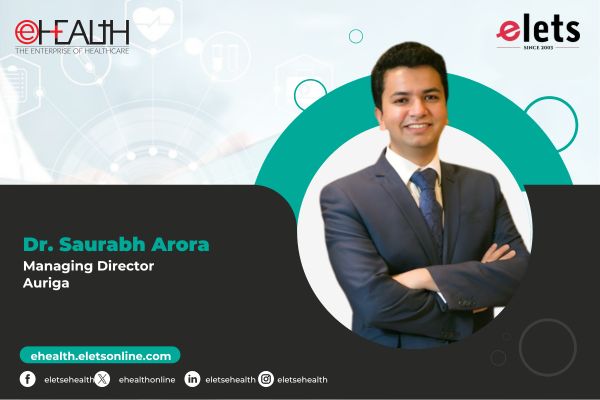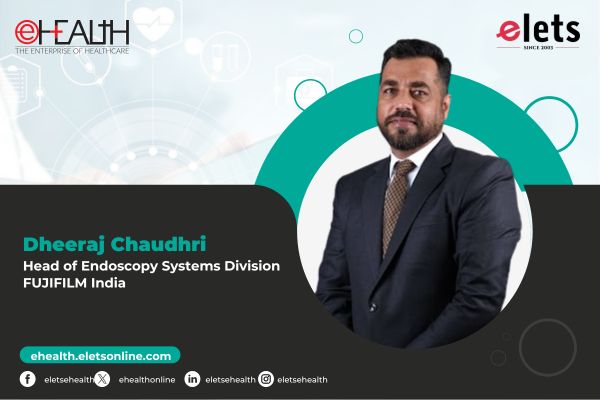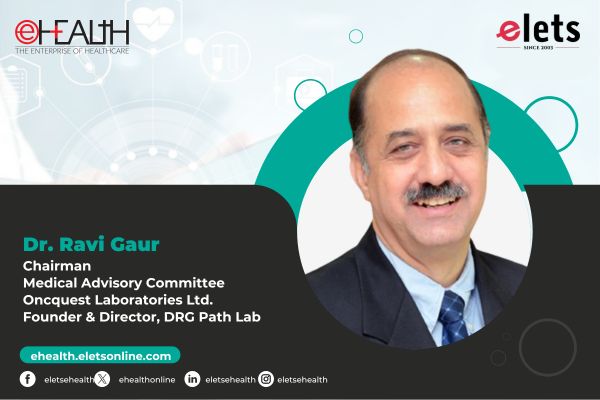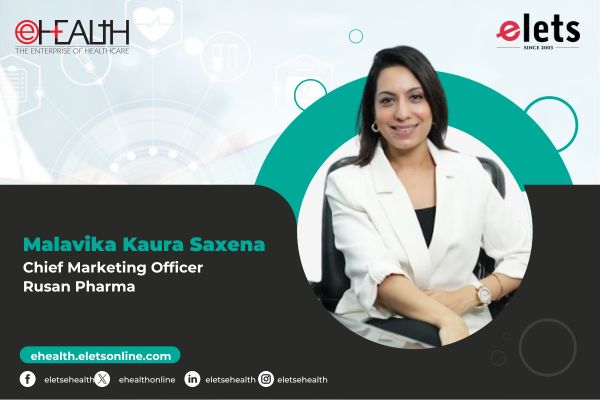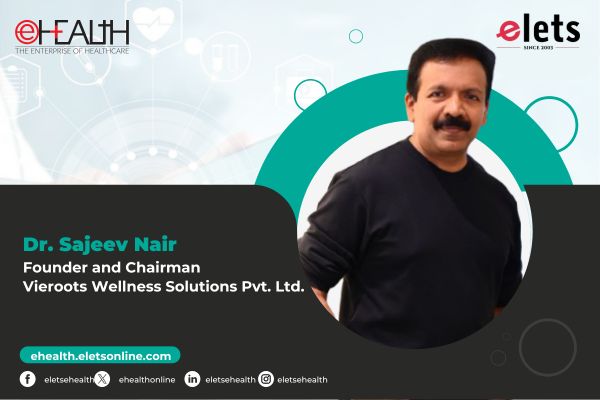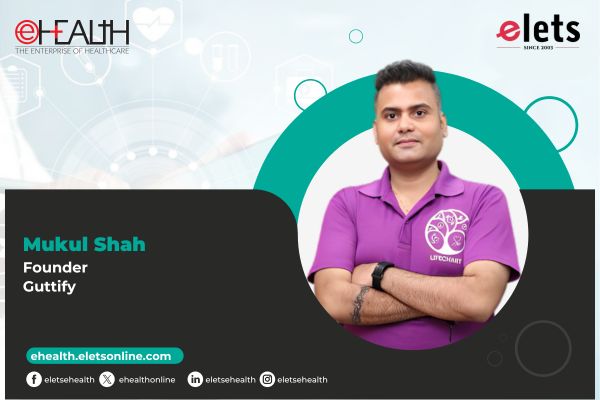
The integration of pharmaceutical data with digital health data, such as electronic health records (EHRs), wearable devices, and genetic information, provides a comprehensive view of a patient’s health. This wealth of data enables healthcare providers to gain deeper insights into a patient’s condition and response to treatment, expressed Manish Kishore, Global Head-IT, Wockhardt Ltd with Kaanchi Chawla of Elets News Network (ENN). Edited excerpts:
With the rapid advancement of digital technologies in the pharmaceutical industry, what innovative IT solutions have you implemented at Wockhardt to enhance drug development and patient care?

As technological innovations continue to support the expansion of the pharmaceutical sector, these technologies make healthcare more effective and efficient, improving patient and provider experiences. Pharma has been using advanced data analytics and artificial intelligence (AI) techniques to process large datasets and identify potential drug candidates more efficiently. Machine learning models have been employed to predict the biological activity and safety of compounds, leading to faster identification of viable drug candidates.
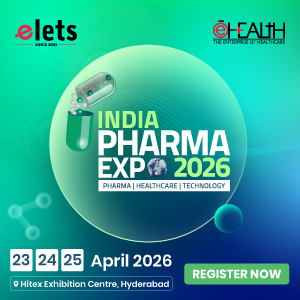
In clinical trial optimisation, technology transformation solutions have been used to optimise the design and execution of clinical trials. Virtual and decentralised trials have become more feasible, allowing patients to participate from home while still providing accurate data. This has the potential to reduce costs and accelerate the drug development process. Also, companies are working on real-world data and evidence to utilising real-world data from sources like electronic health records (EHRs) and wearable devices to gain insights into patient outcomes and treatment effectiveness beyond the controlled environment of clinical trials. This helps in making informed decisions about drug development and patient care. In the supply chain and authentication – companies have implemented blockchain technology to improve the security and transparency of supply chains. Pharma’s are now starting to test personalised treatment plans with the help of tech solutions. Pharmacovigilance and adverse event monitoring have seen digital solutions that have improved the monitoring of adverse events related to medications. Automated systems can detect patterns in real-world data to identify potential safety issues with drugs already on the market.

In a data-driven sector like pharmaceuticals, how do you address the challenges of cybersecurity and data privacy to safeguard sensitive patient information and proprietary research?
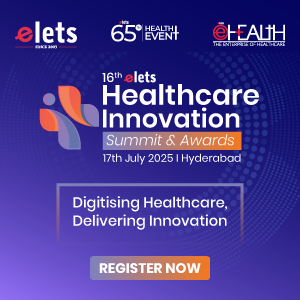
Addressing cybersecurity and data privacy challenges in the pharmaceutical industry is crucial to safeguard sensitive patient information and proprietary research. Strategies and best practices that we have considered cover a comprehensive risk assessment to identify potential vulnerabilities and threats to systems and data. And developed a risk management plan to mitigate and address these risks effectively. Deployed data encryption protocols to protect sensitive data both at rest and during transmission. This ensures that even if unauthorised access occurs, the data remains unreadable and unusable.
Add on to his strict access controls and authentication mechanisms were relooked with multi-factor authentication to add an extra layer of security. Another area of concern was employee training and awareness of cybersecurity best practices and the importance of data privacy. Employees are often the first line of defence against cyber threats, so they should be aware of potential risks and how to respond to them. While pharma has peculiar regulatory requirements of validation and documentation which pulls back the implementation of regular software updates and patch management. We need to keep all software, including operating systems, applications, and security tools, up to date with the latest patches and updates.
Many cyberattacks exploit known vulnerabilities that could be mitigated through updates. We are implementing strategies around this area. Along with this deploying firewalls, intrusion detection and prevention systems, and other network security measures to monitor and protect your network from unauthorised access and cyber threats.
We are also looking at the concept of:
• Data minimisation to ensure collect and store only the data that is necessary for your operations. Minimise the amount of sensitive information you retain to reduce the potential impact of a breach.
• Secure development practices following secure coding practices to prevent vulnerabilities that could be exploited by attackers.
• Develop a comprehensive incident response plan that outlines the steps to take in case of a cybersecurity incident. This plan shall include roles and responsibilities, communication protocols, and strategies for containment and recovery.
• Conduct regular cybersecurity audits and assessments to identify any weaknesses or gaps in your security measures to stay proactive in addressing potential issues before they are exploited.
• Regularly back up your data and establish a robust data recovery process to restore operations in case of a ransomware attack or data breach.
• As remote work becomes more prevalent, ensure that remote access to your systems is secure. Using virtual private networks (VPNs) and other secure remote access solutions.
• Employ continuous monitoring tools and threat intelligence services to detect and respond to cyber threats in real-time.
How do you see the convergence of pharmaceuticals and digital health shaping the future of personalised medicine and patient treatment plans?
The convergence of pharmaceuticals and digital health has the potential to significantly shape the future of personalised medicine and patient treatment plans. This intersection is creating a new paradigm in healthcare, where data-driven insights and technological advancements are transforming how medical treatments are tailored to individual patients. Some areas where I see the future shaping up are:
The integration of pharmaceutical data with digital health data, such as electronic health records (EHRs), wearable devices, and genetic information, provides a comprehensive view of a patient’s health.
This wealth of data enables healthcare providers to gain deeper insights into a patient’s condition and response to treatment.
Precision Medicine – The combination of genetic information, molecular profiling, and real-time health data allows for more accurate diagnosis and treatment selection. Physicians can identify genetic markers that indicate a patient’s predisposition to certain diseases and use this information to develop personalised treatment plans that target the underlying causes.
Pharmaceutical companies are using patient-specific data to develop drugs that are more effective for specific patient populations. This approach helps in identifying the right patients for clinical trials and predicting the drug’s efficacy before administering it to patients. By leveraging machine learning and AI, healthcare providers can predict disease progression and treatment outcomes based on patient data. This enables proactive interventions and adjustments to treatment plans to improve patient outcomes.
Digital health tools allow for continuous remote monitoring of patient’s vital signs, medication adherence, and symptoms. This realtime data enables healthcare providers to make informed decisions about treatment adjustments without requiring patients to visit the clinic frequently. Treatment plans can be dynamically adjusted based on real-time patient data. If a patient’s condition changes, the treatment plan can be modified accordingly, leading to more effective and personalised care.
Digital health tools empower patients to take an active role in their health management. Patients can access their health data, track progress, and receive personalised recommendations for lifestyle changes or medication adherence. Pharmaceutical companies are increasingly using digital tools to recruit and monitor participants for clinical trials. This accelerates the drug development process and ensures that trial participants are a better match for the targeted patient population.
Another important area is the convergence of pharmaceuticals and digital health raises regulatory and ethical challenges related to data privacy, consent, and security.
Balancing the benefits of personalised medicine with patient rights and data protection is essential. Digital health tools and pharmaceutical interventions are being integrated into population health management strategies. By analysing aggregated data, healthcare organisations can identify health trends and design interventions that benefit entire communities.
In an era where real-world evidence and data-driven decisions are gaining prominence, how does your IT division collaborate with R&D to harness the power of big data and derive meaningful insights for drug discovery?
Research and development (R&D) departments are harnessing the power of big data for meaningful insights into drug discovery.
Pharma companies can set up cross-functional teams that include members from both the IT division and R&D. This ensures close collaboration, clear communication, and a shared understanding of goals and challenges.
Technology has to ensure to development of robust data integration strategies to help aggregate and manage data from various sources, including clinical trials, electronic health records, genomics, proteomics, and more. Ensuring data quality, consistency, and security is crucial. This requires technological infrastructure and tools to handle big data effectively.
Information technology can support R&D by providing
• Computational resources for virtual screening and molecular modeling. These simulations can help predict how potential drug candidates will interact with target molecules, saving time and resources.
• Develop interactive data visualisation tools that enable researchers to explore and interpret complex datasets more effectively. Clear visualisations can aid in identifying trends, outliers, and potential leads.
• Collaborate on building predictive models for optimising clinical trial design. IT can assist in developing models that predict patient recruitment rates, trial completion times, and patient responses to treatment.
• Ensure that data usage adheres to ethical guidelines and regulatory requirements, such as patient privacy regulations and data sharing agreements.
• Establish a feedback loop where insights from data analysis inform future experiments and studies. This iterative process allows R&D to refine hypotheses and strategies based on data-driven findings.
• Collaborate with R&D to develop prototypes and proof-of-concept solutions for innovative datadriven approaches before full-scale implementation.
Regular meetings, status updates, and shared documentation ensure that both IT and R&D teams are aligned and progressing toward common goals. Ultimately, a strong collaboration between IT and R&D is essential for harnessing the power of big data in drug discovery. By leveraging each other’s expertise, these divisions can unlock insights that have the potential to revolutionise the pharmaceutical industry and lead to the discovery of novel treatments.
Interconnectivity and interoperability are buzzwords in healthcare. How do you approach the integration of various digital systems and technologies to ensure a seamless experience for both healthcare providers and patients?
Integrating various digital systems and technologies in healthcare to ensure a seamless experience for healthcare providers and patients requires careful planning, technical expertise, and a focus on user needs. NDHM has come up with a very strong interoperability framework and most of the healthcare providers are patching up fast on it.
The main objective of interoperability is to standardise data and interfaces (i.e.) implement data standards (e.g., HL7, FHIR) and consistent interfaces to ensure different systems can communicate effectively.
• Choose interoperability standards that are widely accepted in the healthcare industry.
• Establish robust data governance practices to ensure data accuracy, quality, and compliance with privacy regulations.
• Implement strong security measures to protect patient data and maintain confidentiality.
• Use Application Programming Interfaces (APIs) to enable systems to communicate and share data in real time.
• Rigorously test the integrated systems to identify and resolve issues before full deployment.
• Conduct user acceptance testing to ensure that the integrated solutions meet user expectations.
• Provide comprehensive training for healthcare providers and staff on using the integrated systems effectively.
• Build solutions that can scale as the organisation grows and adapts to new technologies.
• Plan for future enhancements and updates to keep the integrated systems up-to-date.
• Ensure that the integrated systems adhere to healthcare regulations, such as HIPAA, GDPR, and other relevant standards.
• Partnerships and Collaboration is the key – Collaborate with technology partners, vendors, and industry experts to leverage their expertise and resources in achieving seamless integration.
By following these steps and maintaining a strong commitment to user needs and technological best practices, healthcare organisations can successfully achieve interconnectivity and interoperability, resulting in a more efficient and effective healthcare experience for providers and patients alike.
Looking ahead, what emerging technologies do you believe will have the most transformative impact on the pharmaceutical industry, and how is Wockhardt preparing to embrace these changes under your IT leadership?
Looking ahead, a convergence of emerging technologies including artificial intelligence, machine learning, blockchain, precision medicine, gene editing (e.g., CRISPR), telemedicine, bio-printing, 3D printing, and augmented/virtual reality (AR/VR) are poised to have a transformative impact on the pharmaceutical industry. These innovations will accelerate drug discovery, enable personalised treatment plans, enhance data security and supply chain transparency, improve patient access and remote monitoring, and even revolutionise drug manufacturing processes and surgical simulations, ushering in a more patient-centric, efficient, and data-driven era in healthcare and pharmaceutical development.
Be a part of Elets Collaborative Initiatives. Join Us for Upcoming Events and explore business opportunities. Like us on Facebook , connect with us on LinkedIn and follow us on Twitter , Instagram.
"Exciting news! Elets technomedia is now on WhatsApp Channels Subscribe today by clicking the link and stay updated with the latest insights!" Click here!






